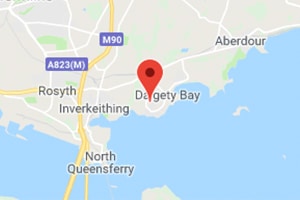The installed capacity of solar photovoltaics has drastically increased in the United Kingdom in the past decade.
After all, a solar PV system has several benefits — the most notable being more eco-friendly and saving money in the long run.
To help you understand (and appreciate) solar PV systems more, we’ll talk about what they are and how you can make the most of them.
What Are Photovoltaic Systems and How Do They Work?
A photovoltaic system is a renewable energy technology that absorbs energy from the sun and transforms it into electricity.
Technically, solar PV panels differ from solar panels, which convert solar energy into heat. However, PV panels are also sometimes called solar panels.
Here is a general step-by-step on how these systems work:
- PV cells are made of a semiconductor, which absorbs sunlight and knocks the electrons from their place.
- The electrons, which have a negative charge, will cause an imbalance in the solar modules — resulting in direct current (DC) electricity.
- The current is sent to an inverter to be converted to an alternating current (AC). This is then either used or stored in the system’s battery.
What Are the Different Components of Photovoltaic Systems?
There are six main photovoltaic system components — and the system’s efficiency depends on whether all these parts are installed correctly.
1. Solar Photovoltaic Array
The solar array refers to solar PV panels that are electrically connected. Photovoltaic modules are wired into a PV array to generate the right electrical current for your home.
The PV modules capture sunlight to create DC electricity.
A PV array is highly flexible — regardless of the size of your installation surface, you can get a design that will still suit your electrical needs.
You can even mount them on the ground! These photovoltaic panels use solar trackers, so they automatically follow the sun throughout the day.
Wherever you place the array, ensure they have a stable mounting system. This ensures the photovoltaic modules are held in place to get enough sunlight.
2. Battery Bank
The battery bank stores unused energy so you can use it later, such as during the evening or in extremely cloudy weather.
Having a battery system is actually optional. However, it can drastically increase the amount of solar energy you can use.
In fact, without solar batteries, you can use only 40% of the PV system’s generated electricity. Meanwhile, good battery storage capacity lets you use 80% of the generated energy.
To choose the right type of battery storage, decide how many days of stored energy your home will need and if your system can fill that energy supply need.
3. Charge Controller
The charge controller regulates DC power flow and ensures that the batteries don’t overcharge.
It measures how charged the batteries are and stops the flow of current if they’re fully charged. This prevents the batteries from being permanently damaged.
Similar to the battery bank, a charge controller is an optional component.
4. Inverter
The inverter converts DC to AC. This is important since home appliances use AC power to function.
There’s also what’s known as the “smart inverter.” This acts as a path for two-way communication between the inverter and electrical utility to balance supply and demand.
Thanks to that, you can improve grid stability, reduce costs, and decrease the risk of power loss.
5. Utility Metre
The utility metre is connected to the PV system and measures how much electricity a house or apartment uses.
However, a new metre (called the generation metre) also measures the energy produced. From here, the electricity can be moved to the consumer unit to be used or back to the national grid
6. Electric Grid
If you’re not completely living off the grid, the extra power you generate will be sent to the grid.
Aside from that, you can also draw power from the grid if your solar PV system doesn’t cover your energy needs.
Benefits of Solar Photovoltaic Systems
Solar PV systems have several benefits over conventional power-generating technologies. Below are some of them:
1. Reduced Electricity Bills
Solar energy is free, so those with completely off-grid systems won’t have to pay electricity bills.
But even those who live with a combination of solar- and grid-connected electricity will also see their bills drastically reduced.
On top of that, you can earn money by selling excess solar energy back to the National Grid or energy provider.
2. Reduced Carbon Footprint
Unlike fossil fuels, the sun is an abundant and readily available renewable energy source.
Aside from that, utilising the sun’s energy doesn’t create noise or pollution.
3. Long System Life and Minimum Maintenance
Admittedly, photovoltaic solar panels aren’t cheap.
However, the photovoltaic system will only need minimum maintenance once you’ve properly installed it.
Also, you can be sure it’s reliable and durable enough to give you a lifetime of energy independence.
Types of Solar Photovoltaic Systems
All photovoltaic cells are made to harvest solar energy and convert them to electricity.
However, the main difference among various kinds of photovoltaic panels is the purity or alignment of silicon. This affects their efficiency as well.
Monocrystalline PV Cells
Monocrystalline cells are made of an extremely pure form of silicon. It’s also the most effective, making it the most expensive option.
Despite the price, it needs less space since it can produce more energy. It also lasts longer and performs better at low light than other solar panels.
Polycrystalline PV Cells
Also known as multi-crystalline cells, these solar panels are made from smaller silicon crystals that are melted and recrystallised together.
They’re the most economical option for homeowners. That’s because they can perform just as well as monocrystalline cells.
However, they’re slightly less efficient and can suffer more at higher heats — causing shorter lifespans.
Thin-Film PV Cells
Thin films are durable and flexible, using less than 1% of the silicone needed in the two aforementioned solar cells.
It’s the cheapest type of solar panel. However, it’s also the least effective and has the shortest lifespan.
Installing Solar Photovoltaic Systems
Because of how widespread solar systems are, it’s relatively easier to learn how to install the right one. After all, it’s easier to research and ask around regarding the right one for you.
Determining the Right System for Your Home
Knowing the right solar PV system ensures you’re making the most of what you paid for. Some factors to consider are:
- Your energy requirements (measured in kilowatt-hours)
- Solar panel efficiency
- Solar panel quality
- Space to mount the photovoltaic panels
- Budget
Preparing Your Home for Installation
When you’ve decided on a solar photovoltaic system, you should plan where the panels will go.
Remember that these come with mounting structures, which can be quite heavy. As such, you’ll want to place them in a sturdy place.
Typically, solar panels are installed on the roof. But, as previously mentioned, solar PV arrays can also be placed on the ground.
Regardless of where you put the panels, ensure they get enough direct sunlight.
Of course, you should also consider where you’ll put the other components. Ensure that these areas are clear and easily accessible.
Working with a Professional Installer
If you want to save on installation costs, you can certainly take up a solar PV installation course to learn how to do it yourself.
But if you’re not completely confident that you can manage photovoltaic installation yourself, it’s best to work with a professional installer.
To find the right energy company, read up on customer reviews and check licences and certifications.
Maintenance and Operation of Solar Photovoltaic Systems
To ensure that your solar system has a long life, you’ll need to know how to properly maintain and operate it.
Keeping the System Clean
Generally, you should have the solar panels cleaned two to four times a year.
Check the panels for dust, bird droppings, and other debris. You can clean them with a leaf blower or a garden hose.
If you’re dealing with heavy snow, use lukewarm water to wash it away. That’s because hot water can crack the panels.
Conducting Regular Maintenance
Do periodic checks of the different components of your photovoltaic system to catch possible problems as soon as possible.
Some things to look out for include the following:
- Damaged cables
- Seals of box lids and cable entries
- Hot spots in the solar inverter and charge controller
- Loose screws
- General wear and tear
Monitoring System Performance
There are PV monitoring systems that can measure factors such as:
- Delivered power
- Real power
- Reactive power
- Voltage
- Current
Aside from measuring, the systems can also issue alarms, errors, and maintenance tickets when something goes wrong.
Cost Considerations
Aside from the solar photovoltaic system, you might also need to hire a professional to install the whole thing.
You may also have to add support structures to your roof to ensure it can handle the load of solar panels.
Solar power may be green energy, but you should also be prepared to pay for maintenance and repairs in the future.
Initial Cost of Installation
The initial installation cost would be £2,500 – £8,000 (including labour costs). This depends on factors such as:
- Type of panels
- Amount of energy you want to generate
- Quality of the components
- Size and type of property
- Whether you want a solar battery or not
Financing Options
The UK offers several financing options so homeowners can afford their own PV systems:
- Energy Company Obligation 4 (ECO4)
- LA Flex scheme
- Smart Export Guarantee (SEG)
- The Green Deal (through the Green Deal Finance Company)
Potential Incentives
Businesses in the UK can get tax breaks if they’re legally allowed to have a solar PV system.
Meanwhile, families can benefit from 0% VAT renewable technologies. When availing of a photovoltaic system, they can save as much as £1,000 on installation.
Depending on the amount of energy your system generates, you can sell excess energy back to the grid under the SEG.
Frequently Asked Questions
To help you understand and make the most of your PV system, below are some FAQs:
What’s the Difference Between an Industrial and Residential Photovoltaic System?
If you have an idea of how a photovoltaic solar panel is built, you’ll realise they use the same technology. However, there are a few main differences:
Size
Residential panels tend to be smaller and generate less power since they only cater to fewer people than industrial systems.
Residential panels have 72 cells, while industrial systems have 96 cells.
Efficiency
Industrial panels are more efficient since they’re expected to power more equipment than residential panels. However, they’re actually only 2% more efficient.
Installation
Industrial panels take longer to install — specifically a week up to a month. This is because they have more components and are more complex.
Meanwhile, residential panels will take only one to two days.
Colour
Solar panels are normally blue and black. These are actually more efficient than getting them in other colours.
Residential systems typically have black panels on black backing. Meanwhile, industrial systems normally have black panels with white backing.
Can Solar PVs Charge an Electric Vehicle?
Yes, you can use a PV system to charge an electric vehicle.
You can find solar-compatible EV chargers to directly divert excess energy from the panels to your EV.
Can Solar PVs Be Used to Heat Water?
Yes, you can use an electric boiler to heat water.
Alternatively, you can have solar thermal panels to directly use solar energy for water heating purposes.
Conclusion
A photovoltaic system captures sunlight to generate electricity for your home.
Its efficiency depends on factors such as the type of photovoltaic cells and the quality of your other components.
It’s ideal to have a battery system to store energy for future use to make the most of the energy produced by your system.

